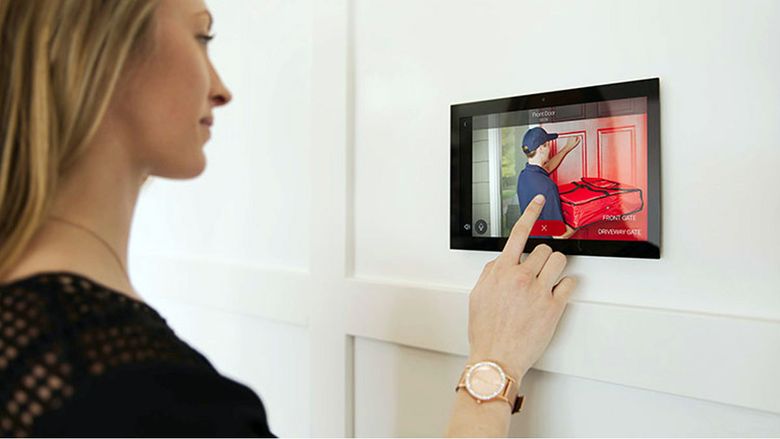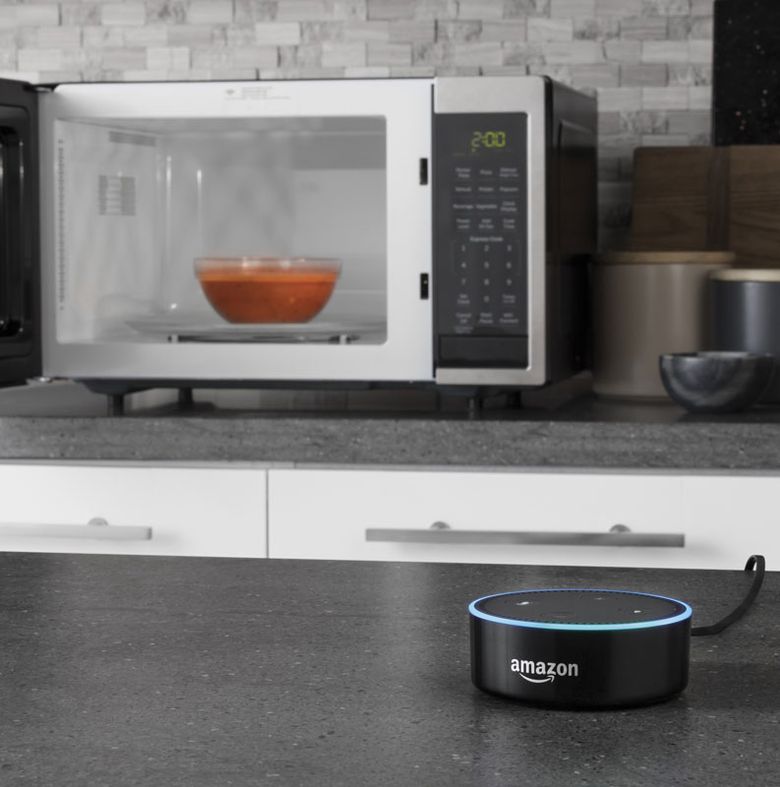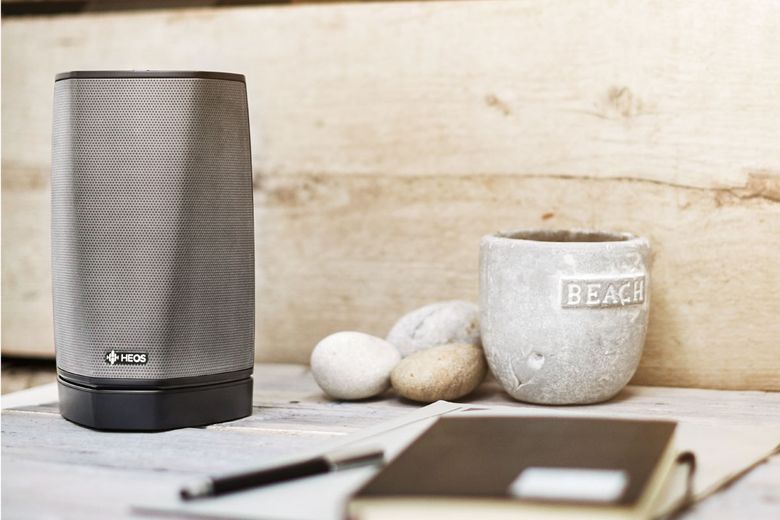It seems like everyone is doing it. Talking to Alexa, asking Google questions, dimming the lights and turning on the oven with an app.
Yes, smart homes are hot, and for good reason: They can save valuable resources such as energy and money. But is being that plugged-in really all it’s cracked up to be? There are issues of privacy, and of just being overwhelmed by technology.
We talked to some experts and did a little digging of our own in order to pass on some key tips and products to help build the smart home of your dreams — rather than something out of a dystopian nightmare.
If you’re looking for more safety
Because Seattle has one of the highest rates of property theft in the country, you may be looking to beef up security on the home front. Thanks to advances in technology and industry disrupters, there are now an array of options for home security systems, from simple to robust.
Franck Rougier, CEO and founder of Lynnwood-based Kirio — an app-based system that integrates smart devices from different manufacturers — says consumers should consider some important questions before selecting a security system. These include: Do you have enough bandwidth and a stable Wi-Fi network for your security solution? Will gadgets from your chosen security system function in a power outage? Do you have a security plan with your family, should you be unavailable? Once you’ve made plans and checked on your home’s requirements, it’s time to narrow down the options.

With the holidays approaching, you may be thinking about thwarting package theft. To keep an eye out, Melissa Mitchell, marketing manager at smart-home solutions company Wipliance in Bellevue, recommends Control4’s Intercom Anywhere system, which allows you to speak to delivery people and unlock doors from your mobile device, among other features.
If you’re looking for a standalone option, Google’s Nest Hello Doorbell has HD video and night vision with a 160-degree field of view so you can see who is at the door from head to foot. You can also speak or play a prerecorded message, get activity alerts and review footage with a data plan.
Speaking of data plans, most security packages have added costs for monitoring services or data storage. The key is to find the right system for your needs so you’re not paying for services you don’t use.
A step up from a doorbell camera is a system of security cameras. Rougier says security cameras have become much more affordable in recent years and now bring advanced elements like facial recognition. When choosing a camera, Mitchell suggests looking for one that has storage capacity for at least 30 days of footage.
A versatile choice is the Arlo Pro 3, a new cordless option. The cameras work indoors or out and have zoom and color night-vision capability. They also contain a spotlight and siren that can be triggered automatically or remotely. Available in two- and three-camera packages, the kit includes a hub, rechargeable batteries, mounts and screws, an ethernet cable and more. Continuous video recording is available for a fee.
If you regularly rush out the door and wonder, five minutes later, if you locked it, a smart lock might be a good option for your home. The August Smart Lock Pro + Connect attaches to your existing deadbolt so you can still use your keys. But it can also be locked and unlocked via an app or by voice; it’s compatible with Siri, Alexa and Google Assistant.
If you want to go hands-free
It’s amazing, these days, what we can do without our hands. “In my opinion, voice is just another great option for control,” says Rougier. “It’s a newer kind of user interface that complements our computers and mobile devices.”
Digital assistants, such as Alexa, Siri and Google Assistant, have risen in popularity, allowing us to use voice commands to accomplish quick tasks, access information and organize our day. Mitchell is intrigued by the new AI platform Josh, which integrates all of your smart technology and understands multiple commands at once. It also processes a more natural language style and learns your preferences over time.
If all of the voice-activated products flooding the market are overwhelming, start small and with the basics. Lights, for example, are a great place to begin. One voice-activated lighting option that requires little setup is the Vocca Voice Activated Bulb Adapter. There’s no Wi-Fi needed or apps involved; simply twist the adapter into the light socket on one end and attach your bulb into the other end. One command turns lights on and off. Simple!
 More and more appliances are becoming compliant with the voice-controlled devices we already utilize. GE’s Countertop Microwave Oven with Scan-To-Cook Technology is one such machine that melds voice commands via digital assistants with other tech advances. Imagine using Alexa or Google Assistant to start your popcorn while you set up a movie in the living room. The microwave also works with the GE Appliances Kitchen App, which allows you to scan the bar code on a frozen meal and the microwave automatically sets to the correct cooking time and power level.
More and more appliances are becoming compliant with the voice-controlled devices we already utilize. GE’s Countertop Microwave Oven with Scan-To-Cook Technology is one such machine that melds voice commands via digital assistants with other tech advances. Imagine using Alexa or Google Assistant to start your popcorn while you set up a movie in the living room. The microwave also works with the GE Appliances Kitchen App, which allows you to scan the bar code on a frozen meal and the microwave automatically sets to the correct cooking time and power level.You don’t have to be online at all, though, to go hands-free. Make an everyday, unpleasant task easier to accomplish with the iTouchless 13 Gallon Deodorizer Sensor Trash Can. Sensors open and close the lid automatically, which helps make cooking and cleanup a more seamless, tidy process.
If you want a more complete audio system
When streaming audio — whether music or media — you tend to get what you pay for. “We have a saying: ‘Date your electronics, marry your speakers,’” Mitchell says. In other words: invest in quality when it comes to sound.
Sonos is a favorite for streaming music, and the company also has a top-of-the line media package, the Sonos 5.1 Surround Set, which includes a Playbar soundbar, subwoofer and two rear speakers. Ideal for an immersive home-theater experience, it has many features, such as Speech Enhancement, which refines the sound of dialogue. It can also be controlled, of course, by voice via Alexa or Google Assistant.
 When it comes to portable speakers, the Denon HEOS 1 is a workhorse that also has the option of voice control through Alexa. It offers up big sound in a compact package and is made to withstand the elements, whether you’re cranking Beethoven’s Sixth over the roar of a morning shower or taking the party outdoors on a sticky summer night. The HEOS 1 can be operated via Bluetooth or Wi-Fi. In general, Rougier recommends connecting via Wi-Fi for its convenience and quality. He also advises having a strong Wi-Fi signal and adding routers, if necessary, to ensure a great sound experience.
When it comes to portable speakers, the Denon HEOS 1 is a workhorse that also has the option of voice control through Alexa. It offers up big sound in a compact package and is made to withstand the elements, whether you’re cranking Beethoven’s Sixth over the roar of a morning shower or taking the party outdoors on a sticky summer night. The HEOS 1 can be operated via Bluetooth or Wi-Fi. In general, Rougier recommends connecting via Wi-Fi for its convenience and quality. He also advises having a strong Wi-Fi signal and adding routers, if necessary, to ensure a great sound experience. 
